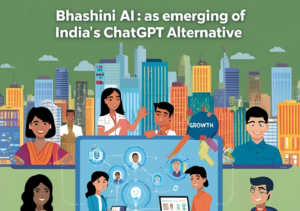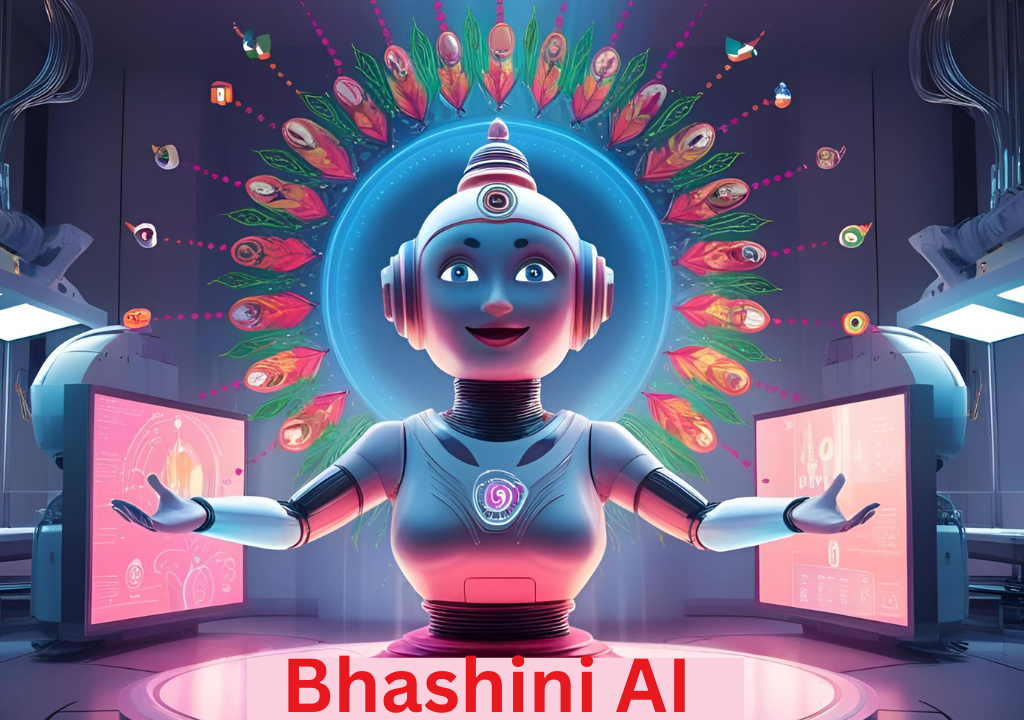India is making bold strides toward developing its own AI-powered language assistant. At the heart of this mission is Bhashini AI, a government-led initiative aimed at creating a multilingual, accessible, and secure alternative to platforms like ChatGPT. Designed specifically for India’s linguistic diversity and public service needs, Bhashini seeks to democratize AI by enabling real-time translation, voice-based access, and content creation in over 20 Indian languages.
With strategic investments in AI infrastructure, indigenous language models, and ethical AI governance, India is no longer just a participant in the AI revolution—it’s positioning itself as a global leader. But can Bhashini truly match or surpass the capabilities of global AI giants? This article explores how India is building its own ChatGPT alternative—and why it matters now more than ever.
What Is Bhashini AI?
Bhashini AI (BHASa INterface for India) is a Digital India initiative launched under the National Language Translation Mission by the Ministry of Electronics & Information Technology (MeitY). Its core objective is to provide real-time, AI-powered translation services across Indian languages, enabling seamless access to the digital world for citizens who do not speak English.
Unlike ChatGPT, which is predominantly trained on English and Western datasets, Bhashini is rooted in Indian linguistic realities. It’s designed to support communication, governance, content creation, and service delivery in all 22 official Indian languages and many regional dialects.

Why India Needs Bhashini: A ChatGPT Alternative for the Indian Context
India’s need for a homegrown AI assistant stems from four core priorities: inclusivity, empowerment, security, and national strategy. With over 19,500 languages and dialects, most Indians are left out by English-centric AI models. Bhashini AI addresses this linguistic gap, enabling real-time communication in regional languages.
Its voice-based interface supports rural populations where digital literacy is low, while promoting data sovereignty by keeping sensitive information within national boundaries. Most importantly, Bhashini aligns with the vision of Aatmanirbhar Bharat, reducing dependency on global tech giants and fostering indigenous AI innovation.
How Bhashini AI Works: Technology, Features, and Impact
Bhashini’s core strength lies in its real-time translation, context-aware natural language processing, and voice assistant features, enabling hands-free interaction in local languages. It is already integrated with key public platforms like eCourts, PM-Kisan, and DigiLocker, transforming citizen engagement.
Backed by the ₹10,300 crore IndiaAI Mission, Bhashini draws on one of the world’s largest GPU clusters and open AI datasets. Supporting models like BharatGen, Sarvam-1, and Everest 1.0 further strengthen its multilingual capabilities. Deployment at events like Mahakumbh 2025 proved its scalability in real-world scenarios.
India’s talent development pipeline is also growing—AI is now part of UG to PhD curricula, and over 520 tech incubators support local innovation. This ecosystem, paired with a balanced techno-legal regulatory approach, ensures that Bhashini is not only powerful and accessible, but also ethical and inclusive.
Links Suggested: Digital India and Cyber Security: Balancing Innovation and Protection
Challenges on the Path to Building Bhashini AI
India’s ambition to build an indigenous AI assistant through Bhashini is inspiring, but several critical challenges must be addressed to ensure its long-term success.
1. Scaling Multilingual Training Data
India’s vast linguistic landscape presents a major hurdle. Many Indian languages, especially those spoken by smaller communities, lack sufficient labeled datasets. To overcome this, innovative data collection methods such as crowdsourcing, academic collaboration, and synthetic dataset generation must be employed. Ensuring high-quality, representative data is essential for training AI that truly understands Indian linguistic nuances.
2. Competing With Global AI Giants
Global models like ChatGPT are backed by billion-dollar investments and massive computing infrastructure. Competing with such scale requires India to invest strategically in public-private partnerships, expand AI compute infrastructure, and optimize the use of its GPU clusters under the IndiaAI Mission. Sustained funding and collaboration with academic and industry stakeholders will be key.
3. Encouraging User Adoption and Digital Literacy
Technology adoption is not automatic. Many users, especially in rural and semi-urban areas, may be unfamiliar or skeptical of AI tools. Building trust in Bhashini will require user-friendly interfaces, transparent use policies, and targeted digital literacy campaigns that explain how the platform works and how it benefits the user in their local language.
4. Balancing Open Access with Privacy and Security
While Bhashini AI promotes open and affordable access, it must also maintain high standards of data privacy, ethical use, and security. Robust governance frameworks, clear consent protocols, and proactive cybersecurity measures are essential to protect user data, especially as Bhashini integrates with sensitive public service platforms.
Links Suggested: India-Bangladesh Relations: Why India Withdrew the Trans-Shipment Facility
The Road Ahead for Bhashini AI
India’s roadmap for scaling Bhashini into a national AI assistant is ambitious and structured around key priorities:
- Expanding Language Support: Bhashini aims to eventually support all 22 official Indian languages and dozens of widely spoken regional dialects, creating one of the most inclusive language AI platforms in the world.
- Sector-Wide Integration: Plans are underway to integrate Bhashini into critical areas such as education, healthcare, agriculture, and legal services. This will help millions of Indians interact with public systems in their native language.
- Workforce Development: India plans to create one million AI-skilled professionals by 2026 through academic curriculum reform, AI labs, and fellowship programs across Tier 1 to Tier 3 cities.
- Indigenous Hardware Capabilities: To reduce dependency on imported GPUs, India is investing in domestic semiconductor manufacturing and aims to develop its own GPU technology in the coming years.
- Government-Wide Adoption: Bhashini is being positioned as the default AI assistant across various government platforms, enabling real-time multilingual services for citizens through helplines, apps, and portals.
Conclusion: A Made-in-India AI for the World
With the combined force of Bhashini AI , BharatGen, Sarvam-1, and the IndiaAI Mission, India is developing a uniquely Indian AI ecosystem—one that is inclusive, multilingual, ethically governed, and built for scale. These efforts are not merely technological milestones; they are steps toward digital sovereignty, accessibility, and empowerment.
Bhashini AI is more than just a tool—it is a representation of India’s commitment to ensuring that every citizen can participate in the digital revolution, regardless of language or literacy. As the global race for AI leadership accelerates, India is setting a new model: one that prioritizes people, languages, and responsible innovation.
Bhashini is not just an AI assistant. It is India’s voice in the future of artificial intelligence.

